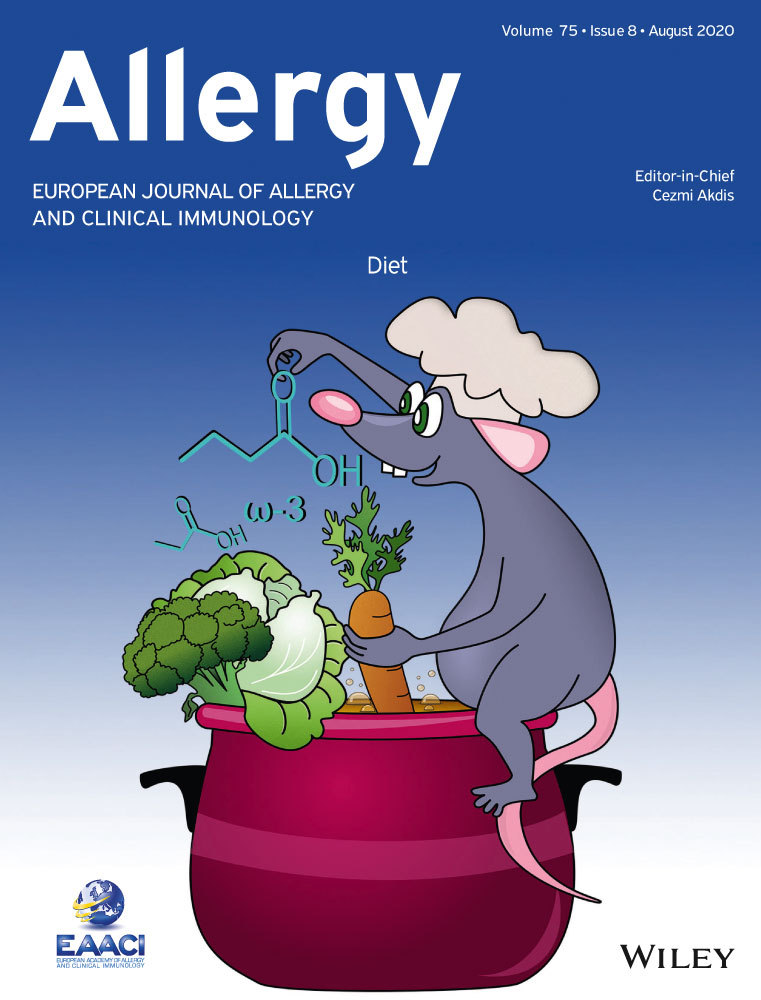Plasminogen glycoforms alteration and activation susceptibility associated with the missense variant p.Lys330Glu in HAE-PLG patients
Faidra Parsopoulou
Department of Immunology & Histocompatibility, Faculty of Medicine, University of Thessaly, Larissa, Greece
CeMIA SA, Larissa, Greece
GREPI EA7408, EFS Rhône-Alpes, Université Grenoble Alpes, Grenoble, France
Search for more papers by this authorFotis Psarros
Department of Allergology, Navy Hospital, Athens, Greece
Search for more papers by this authorCoen Maas
Department of Clinical Chemistry and Haematology, University Medical Center Utrecht, Utrecht University, Utrecht, The Netherlands
Search for more papers by this authorTeresa Gonzalez-Quevedo
Reference Unit for Angioedema in Andalusia, Allergy Department, Virgen del Rocío University Hospital, Seville, Spain
Search for more papers by this authorChristian Drouet
GREPI EA7408, EFS Rhône-Alpes, Université Grenoble Alpes, Grenoble, France
INSERM U1016, CNRS UMR8104, Institut Cochin, Université de Paris, Paris, France
Search for more papers by this authorAnastasios E. Germenis
Department of Immunology & Histocompatibility, Faculty of Medicine, University of Thessaly, Larissa, Greece
CeMIA SA, Larissa, Greece
Search for more papers by this authorCorresponding Author
Arije Ghannam
KininX, Grenoble, France
Correspondence
Arije Ghannam, KininX, 5 rue des arts et métiers 38000 Grenoble France.
Email: [email protected]
Search for more papers by this authorFaidra Parsopoulou
Department of Immunology & Histocompatibility, Faculty of Medicine, University of Thessaly, Larissa, Greece
CeMIA SA, Larissa, Greece
GREPI EA7408, EFS Rhône-Alpes, Université Grenoble Alpes, Grenoble, France
Search for more papers by this authorFotis Psarros
Department of Allergology, Navy Hospital, Athens, Greece
Search for more papers by this authorCoen Maas
Department of Clinical Chemistry and Haematology, University Medical Center Utrecht, Utrecht University, Utrecht, The Netherlands
Search for more papers by this authorTeresa Gonzalez-Quevedo
Reference Unit for Angioedema in Andalusia, Allergy Department, Virgen del Rocío University Hospital, Seville, Spain
Search for more papers by this authorChristian Drouet
GREPI EA7408, EFS Rhône-Alpes, Université Grenoble Alpes, Grenoble, France
INSERM U1016, CNRS UMR8104, Institut Cochin, Université de Paris, Paris, France
Search for more papers by this authorAnastasios E. Germenis
Department of Immunology & Histocompatibility, Faculty of Medicine, University of Thessaly, Larissa, Greece
CeMIA SA, Larissa, Greece
Search for more papers by this authorCorresponding Author
Arije Ghannam
KininX, Grenoble, France
Correspondence
Arije Ghannam, KininX, 5 rue des arts et métiers 38000 Grenoble France.
Email: [email protected]
Search for more papers by this author
REFERENCES
- 1Bork K, Wulff K, Steinmüller-Magin L, et al. Hereditary angioedema with a mutation in the plasminogen gene. Allergy. 2018; 73: 442-450.
- 2Germenis AE, Loules G, Zamanakou M, et al. On the pathogenicity of the plasminogen K330E mutation for hereditary angioedema. Allergy. 2018; 73: 1751-1753.
- 3Maas C. Plasminflammation-An emerging pathway to bradykinin production. Front Immunol. 2019; 10: 2046.
- 4Dewald G. A missense mutation in the plasminogen gene, within the plasminogen kringle 3 domain, in hereditary angioedema with normal C1 inhibitor. Biochem Biophys Res Commun. 2018; 498: 193-198.
- 5Ghannam A, Sellier P, Defendi F, et al. C1 inhibitor function using contact-phase proteases as target: evaluation of an innovative assay. Allergy. 2015; 70: 1103-1111.
- 6Defendi F, Charignon D, Ghannam A, et al. Enzymatic assays for the diagnosis of bradykinin-dependent angioedema. PLoS ONE. 2013; 8:e70140.
- 7Baroso R, Sellier P, Defendi F, et al. Kininogen cleavage assay: diagnostic assistance for kinin-mediated angioedema conditions. PLoS ONE. 2016; 11:e0163958.
- 8Takada A, Takada Y. The activation of two isozymes of glu-plasminogen (I and II) by urokinase and streptokinase. Thromb Res. 1983; 30: 633-642.
- 9Gonzalez-Gronow M, Gawdi G, Pizzo SV. Tissue factor is the receptor for plasminogen type 1 on 1-LN human prostate cancer cells. Blood. 2002; 99: 4562-4567.




